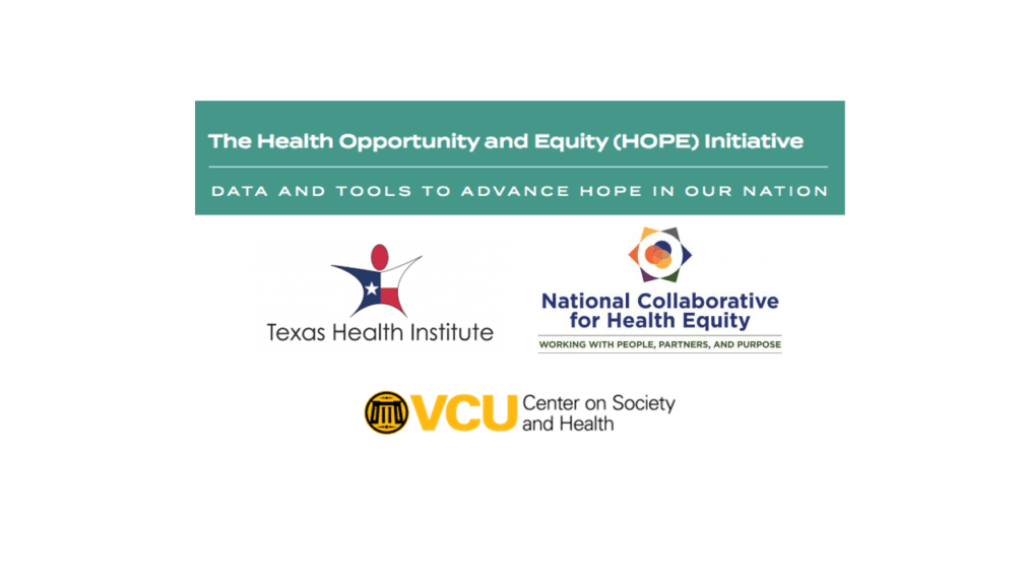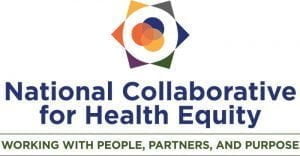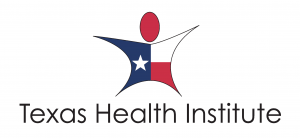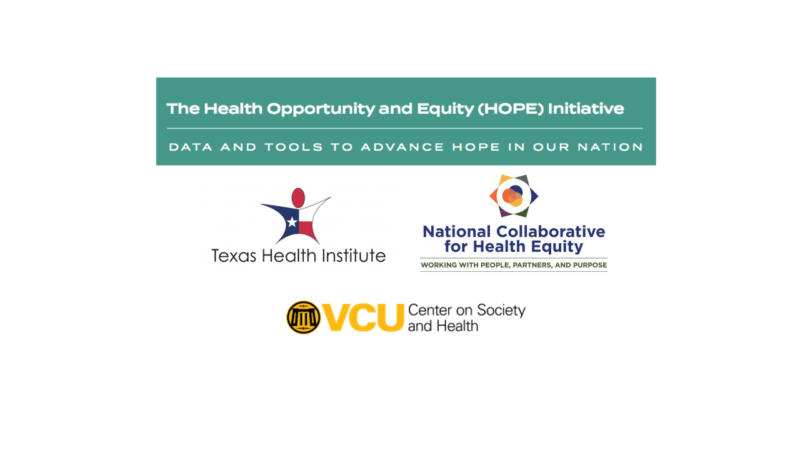HOPE Initiative Takes Aspirational, Actionable Approach Toward Health Equity
The HOPE InitiativeICYMI, the National Collaborative for Health Equity, the Texas Health Institute, and the Virginia Commonwealth University’s Center on Society and Health launched the Health Opportunity and Equity (HOPE) Initiative in July 2018.
The HOPE Initiative is a major new effort to better understand, assess, and accelerate the nation’s progress towards improving equitable opportunities for health and well-being for all Americans. We know that the odds for good health and well-being are higher for people who are well-educated and well-resourced. But what are the consequences for everyone else? What would it mean if all who live in the United States got a fair shot at living the healthiest lives possible?
For example, the HOPE Initiative found that if everyone had access to the conditions to achieve health and well-being:
- 17,000 more babies would live to see their first birthday
- 375,000 more adults between the ages of 18 and 64 would not die prematurely
- 26 million more people would have a regular healthcare provider to help them stay healthy and get care when they’re sick
- 53 million more adults would be in excellent or very good health
- 70 million more people would live in low-poverty neighborhoods, as opposed to communities where the majority of residents struggle to get by
While higher levels of education are associated with better health, education is not a guarantee of a better life for everyone. Even among those with college degrees, some races or ethnicities fare worse across a range of health outcomes. For example, black babies born to college-educated mothers are more likely to die before their first birthday (9.2 in 1,000) than Hispanic (5.6) and Asian/Pacific Islander (Asian/PI) (5.4) infants born to mothers with less than a high school education. Even with a college education, black and American Indian/Alaskan Native adults (ages 25 to 64) are more likely to die prematurely than Asian/PI, Multiracial, and Hispanic peers with less than a high school education.
We are all aware of the lack of opportunity that millions of Americans face, often due to circumstances outside of their personal control. Both within and across states, peoples’ chances at health and well-being vary dramatically by race and place. With multitudes of data on health disparities, we sometimes find ourselves buried in inequities with no clear path towards progress.
The HOPE Initiative moves away from the language of “deficits” and “disparities,” towards an aspirational and actionable opportunity framework. We focus on measures of employment instead of unemployment, connected youth instead of high school dropouts, and clean air instead of air pollution, to name a few. Our aim is to reframe conversations from describing problems to highlighting what we can celebrate, identifying where in this country we are making progress in creating opportunities that matter for improving health and well-being for everyone.
The initiative covers 28 indicators across a broad range of factors that affect health and well-being—including socioeconomic factors, the social and physical environments, and access to health care—and across health outcomes spanning the entire life-course. These opportunity-focused indicators measure actionable conditions that are modifiable by policy and practice. We provide national and state data by race, ethnicity and socioeconomic status, allowing for a deeper understanding of health equity and opportunity for specific population groups. We intentionally set the HOPE Initiative’s measures at the national and state levels not only to track progress, but also because we understand the power held by states to create and further opportunities through policies that improve the lives of their residents and communities.
The indicators also have a corresponding benchmark or goal based on the best performing socioeconomic status groups in the highest performing states. This approach allows for the benchmarks to be aspirational yet achievable, because they are based on actual rates observed in the population. This avoids a common pitfall in disparities research—using whites as the referent group or highlighting a top performing minority group and thereby perpetuating the problematic “model minority” narrative.
HOPE measures the “distance-to-goal,” a calculation of the nation’s and states’ progress toward achieving equity. State rankings on this metric enable states to both compare themselves to other states and understand the opportunity profile for residents within their own state. These rankings show that every state has an area of opportunity where it is doing well and areas for improvement. Let’s work towards making the land of opportunity a reality. To learn more about the HOPE Initiative and to download the HOPE tools, visit the website.
This initiative was made possible with funding from the Robert Wood Johnson Foundation.
About the authors
National Collaborative for Health Equity
VCU Center on Society and Health
Steven H. Woolf, MD, MPH













All comments will be reviewed and posted if substantive and of general interest to IAPHS readers.